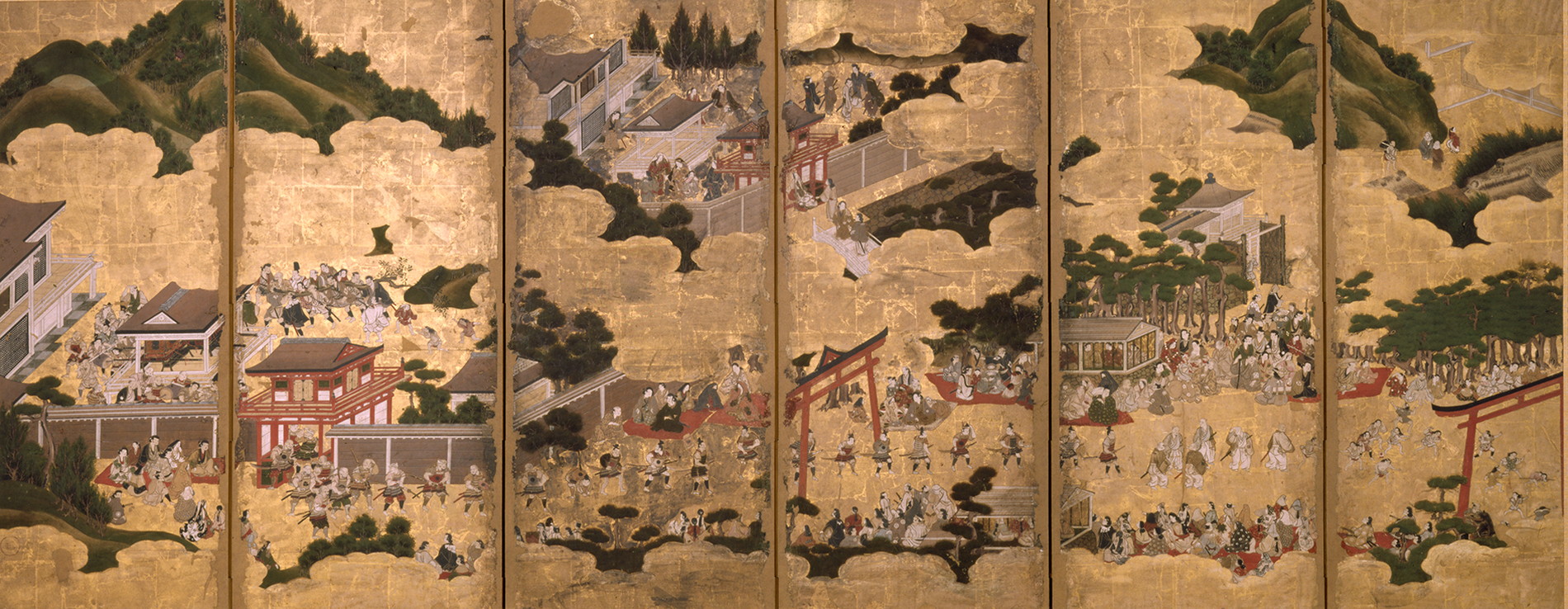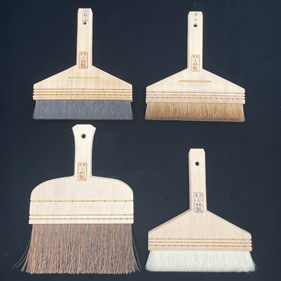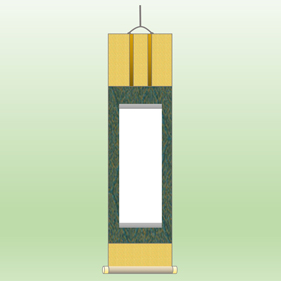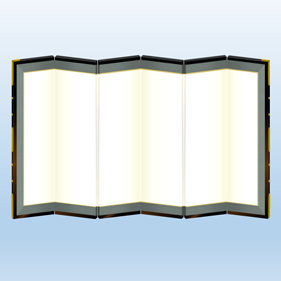Although folding screens were originally used as furnishings to provide protection from the wind, the obverse side was ornamented with paintings and calligraphy. In ancient times, folding screens were imported from China, but byōbu-e folding screens decorated with paintings were produced in large numbers in early modern Japan. Folding screens can be moved to any preferred position in a room to create gorgeous interior decoration. It is a convenient format for paintings as the screen can be folded and put away when not in use. It is also possible to adjust the width by varying the angles or unfolding the screen, which will change the appearance of the painting. The panels are typically joined with paper hinges, which is why the fold can be either a mountain fold or a valley fold. Folding screens were popular gifts and there are some examples sent to recipients overseas as gifts from the Edo shogunate.
The most common format is the six-panel screen consisting of six joined panels, but there are also two-panel, four-panel, eight-panel and ten-panel folding screens. Generally, folding screens were produced and displayed in pairs. Some were also created as free-standing single screens, but other single screens we see today are one of a pair, the other one having been lost as the screens passed from one generation to the next.
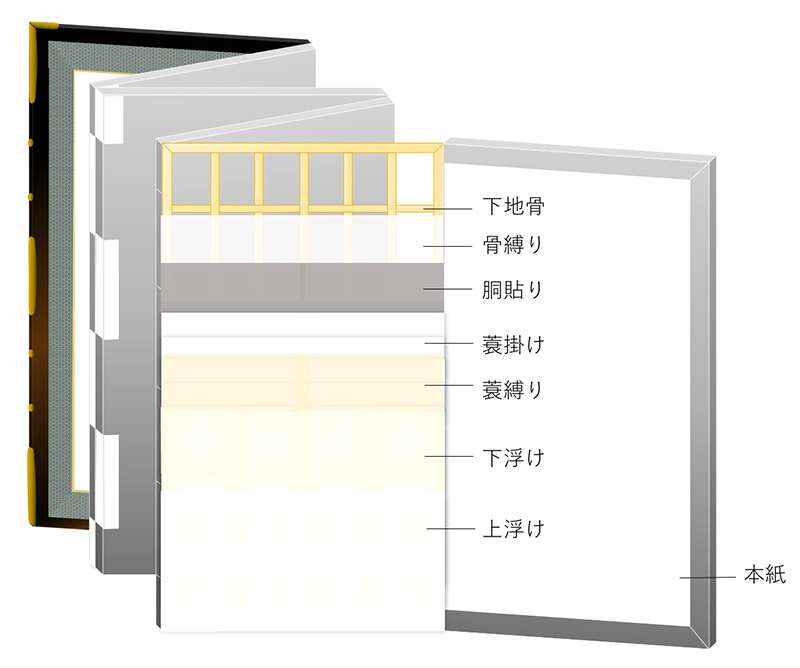
The artwork is painted on the paper surface of the folding screen, which is supported from below by approximately six layers of paper pasted together. In addition to providing support for the honshi, such multi-layered constructions also serve to regulate humidity levels. The inner wooden core and the lining papers deteriorate with the passing of time and, sometimes, damage to the backing may have an impact on the honshi. Therefore, the entire screen is taken apart and the honshi removed in the process of restoration. If damage is found, repairs are applied from the reverse side of the honshi and the backing is replaced.
Many folding screens have large surfaces and require a robust honshi for the artwork. Traditionally, gampi paper, made with fiber from the gampi, plant (Diplomorpha sikokiana), or bamboo paper, made with bamboo fiber, were often used for the honshi. If the surface of the honshi is damaged by insects or for some other reason, the missing area is repaired with paper of the same quality and material as the honshi. Therefore, the material used for the honshi is analyzed and paper of the same quality is prepared for the restoration.
This is an introduction to manufacturing the repair paper used to restore honshi.
A pair of six-panell folding screen, 17th century, Hunburg Craft Museum
Manufacturing repair paper (video)
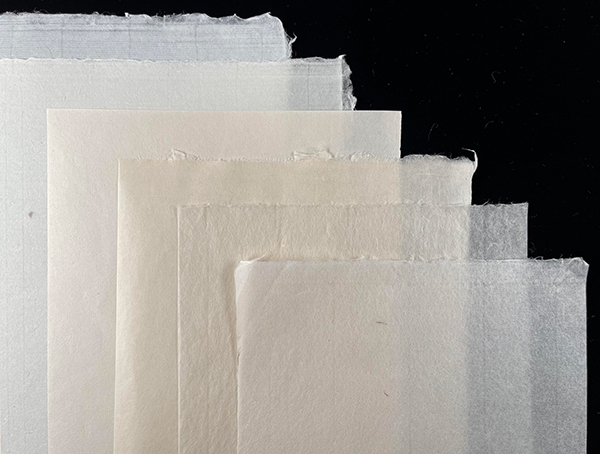
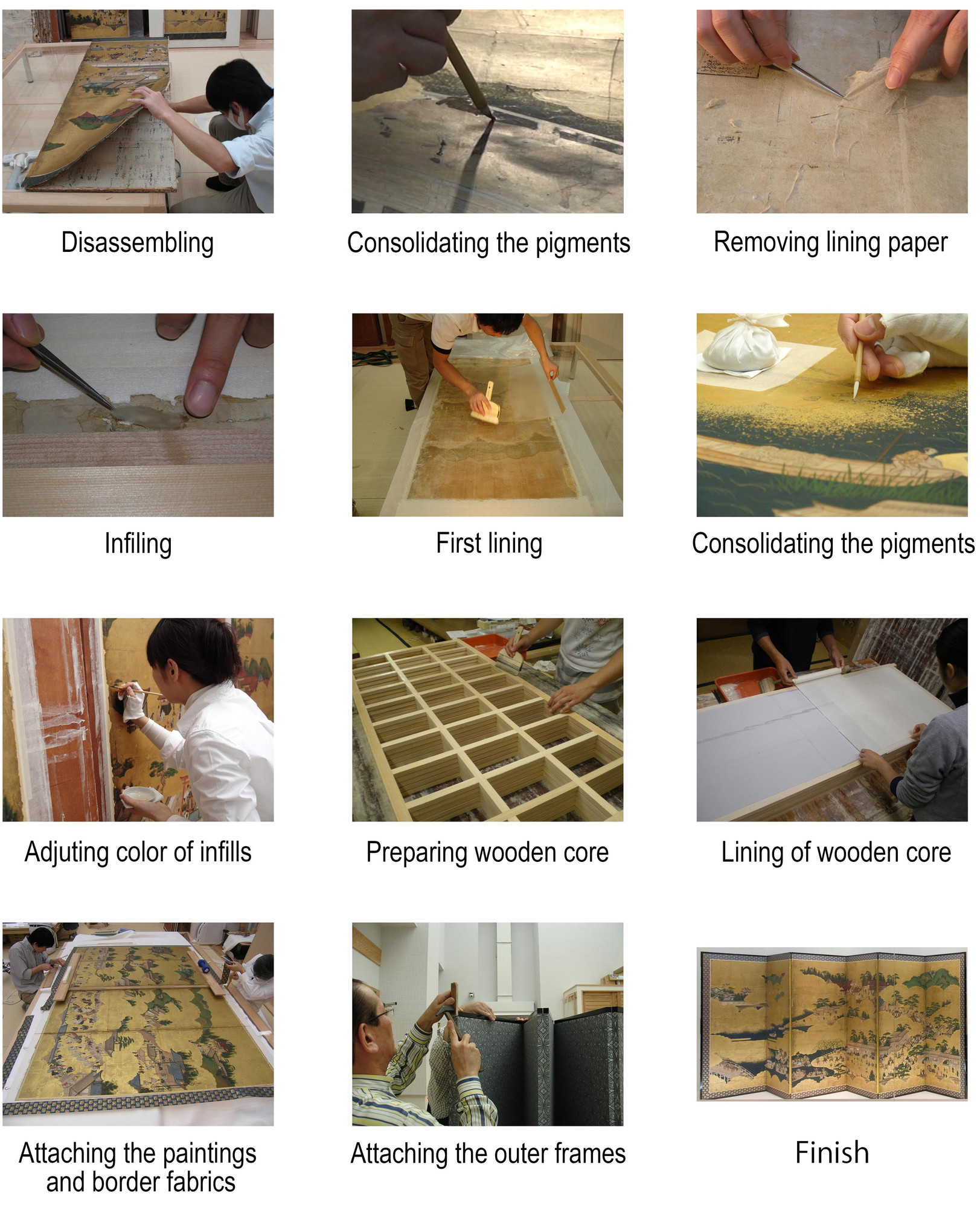 PDF files of restoration report are available from here
PDF files of restoration report are available from here
